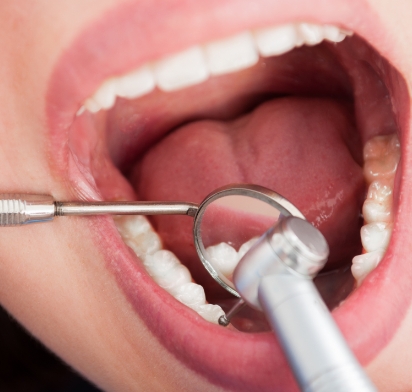Tooth extraction is one of the most common dental procedures, performed for a variety of reasons—from decay and infection to overcrowding or trauma. Although the thought of having a tooth pulled may seem daunting, modern dentistry has made the process safe, quick, and relatively pain-free.
This article walks you through everything you need to know about tooth extraction dentist from the reasons behind it to the procedure itself and what to expect during recovery.
🔍 Why Tooth Extraction May Be Necessary
Tooth extraction isn’t always the first choice, but in some cases, it becomes the most practical solution for long-term dental health.
Severe Tooth Decay or Damage
When a tooth is severely decayed or structurally compromised beyond repair, extraction is often the only way to prevent further complications such as infection or spread to nearby teeth.
Gum Disease
Advanced periodontal disease can lead to loosening of teeth. If the gums and bone cannot support the tooth, extraction may be necessary to preserve oral health.
Impacted Wisdom Teeth
Wisdom teeth, or third molars, often grow in at awkward angles or become trapped under the gum line. Impacted wisdom teeth can cause pain, swelling, and infection, making extraction a preventive measure.
Orthodontic Reasons
In some cases, teeth may be removed to create space for proper alignment during orthodontic treatment like braces or clear aligners.
🏥 Types of Tooth Extractions
Tooth extraction procedures fall into two main categories:
Simple Extraction
This procedure is performed on teeth that are visible above the gum line and can be removed with forceps. Local anesthesia is used to numb the area, and the process is typically quick and straightforward.
Surgical Extraction
If the tooth is broken, impacted, or has not fully erupted, a surgical extraction is needed. This involves a small incision in the gum and possibly removal of bone around the tooth. It may be done by a general dentist or an oral surgeon.
🧑⚕️ The Role of the Dentist: What to Expect
Your dentist plays a crucial role before, during, and after the extraction. Here’s what you can typically expect:
1. Initial Examination and Imaging
A dentist will assess your tooth using visual inspection and X-rays to determine the condition of the tooth, root, and surrounding bone. This helps decide the best approach for extraction.
2. Discussion and Consent
Your dentist will explain the procedure, risks, anesthesia options, and aftercare. You will also be asked about your medical history, allergies, and any current medications.
3. The Procedure
- Numbing the area: Local anesthesia is administered to prevent pain.
- Tooth removal: Using specialized tools, the dentist loosens and removes the tooth.
- Stitches (if needed): In surgical cases, sutures may be placed to aid healing.
- Gauze placement: You’ll be asked to bite down on gauze to stop the bleeding.
The entire process typically takes between 20 minutes to an hour, depending on the complexity.
🩹 Recovery and Aftercare: Ensuring a Smooth Healing Process
Proper post-extraction care is essential to prevent complications like infection or dry socket. Here are key tips your dentist will provide:
Do's After Extraction
- Rest for the day. Avoid strenuous activity.
- Keep the gauze in place. Change it as advised.
- Apply ice packs. This helps reduce swelling.
- Take prescribed medications. Painkillers and antibiotics may be given.
Don’ts After Extraction
- Avoid rinsing or spitting forcefully for the first 24 hours.
- Do not smoke for at least 72 hours.
- Stay away from hard or crunchy foods and stick to soft items like yogurt, soup, and smoothies.
- Avoid drinking through a straw, as it may dislodge the blood clot.
Healing Timeline
- First 24 hours: Swelling and mild bleeding are normal.
- 2–3 days: Pain should decrease. Eat soft foods.
- 1 week: Stitches (if any) may be removed.
- 2 weeks: Gums typically heal completely in this time.
⚠️ Risks and Complications (Though Rare)
Tooth extractions are generally safe, but there are minor risks:
- Dry socket: When the blood clot dislodges, exposing the bone.
- Infection: Especially if aftercare guidelines aren’t followed.
- Prolonged bleeding or swelling: May indicate a complication and requires a visit back to the dentist.
- Nerve injury: Rare, but possible in complex surgical extractions.
If you experience high fever, excessive bleeding, or severe pain, you should contact your dentist immediately.
🧠 FAQs: Common Patient Questions
Is the procedure painful?
With modern anesthesia, most patients feel pressure but no pain. Post-procedure discomfort is manageable with medication.
How long will I be off work or school?
Most people resume normal activities the next day, depending on the complexity of the extraction.
When can I eat normally?
Soft foods are recommended for the first 2–3 days. You can return to a normal diet once healing progresses, usually within a week.
Can I replace the missing tooth?
Yes, options include dental implants, bridges, or partial dentures. Your dentist will guide you based on your needs.
🏁 Final Thoughts: Don’t Fear the Extraction
Tooth extraction might sound intimidating, but under the care of a skilled dentist, it becomes a smooth and efficient process. Whether you need it for health, alignment, or comfort, the key is to follow professional advice and focus on proper aftercare. With the right approach, you’ll be back to smiling, speaking, and eating comfortably in no time!
Business Website: https://cranbrookdentist.ca/extractions-oral-surgery/





Comments